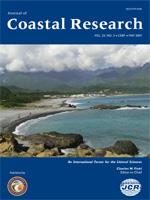One of the problems dealing with traditional water-monitoring methods is the need to collect water samples at the precise moment that faecal contamination is actually present; for this reason, the use of Mytilus galloprovincialis as an indicator of previously high bacteria concentrations in coastal seawaters was examined. These molluscs are able to integrate the fluctuations in pollutants, they are good representatives of the sampling area because they are sedentary, and they offer the advantage of being resistant to pollution. The research was conducted from September 2001 to October 2002, twice a month, in two coastal areas of Salento (Apulia, Italy), near the discharge channels. We analysed both natural and cultivated mussels. The latter were placed in cages, after checking their starting level of microbiological pollution. Bacteriological analyses were conducted simultaneously on mussels and their ambient water to detect total coliforms, faecal coliforms, faecal streptococci, and Escherichia coli.
The abundance of bacteria investigated was always higher within mussels than in the surrounding water where levels were sometimes undetectable. These results confirm the ability of mussels to concentrate and to retain bacteria into their tissues (recorders of present or even past microbiological pollution). Therefore, mussels can enable to detect a bacterial contamination that might be missed by standard water-monitoring methods, and we suggest they be included in routine microbiological investigations of coastal seawaters even in areas where these species aren't widely distributed.





